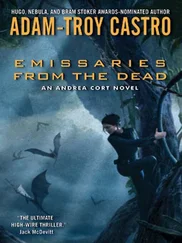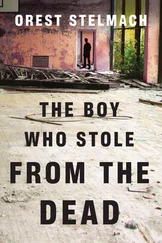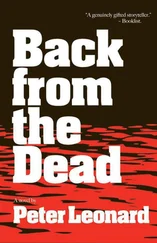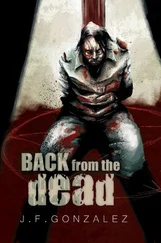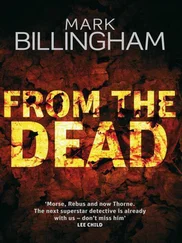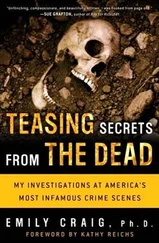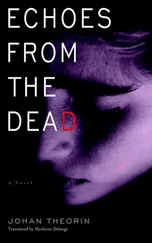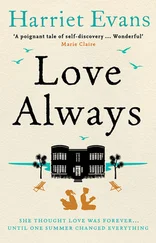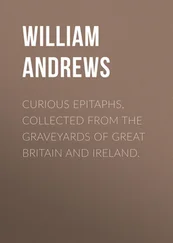Now it was time to reach for the skull, and I was sorely tempted to simply snatch it from the soil and start checking for some sort of fatal injury. But I made myself go slowly. The detectives had pulled into a tight group above me on the riverbank, gazing down intently as I knelt over the half-buried skull, using a small soft-bristle paintbrush to brush away as much loose dirt and debris as I could. Then I followed the contours of the bone gently with my fingers, reaching as far into the soil as I dared, carefully lifting the skull from its resting place.
Breathless with anticipation, I turned the skull slowly in my hands. There was a neat round bullet hole directly behind the left ear, fractures radiating out from the hole like starbursts. Maybe tonight when I got home I'd feel some compassion for this man, shot in the head and left to rot in the dirt. Now all I felt was the thrill of the hunt.
Mark had come up behind me and was studying the skull over my shoulder. “Look,” I said, tracing the bullet hole with my gloved finger. “Here's an entrance gunshot wound. Now, do we have an exit wound, or have we gotten really lucky?” No exit wound might mean that the bullet itself was still inside the man's skull, an incredible piece of good fortune.
I turned the skull around slowly in my hand. Nope. No exit wound. The bullet that had killed this man might be lodged within these head bones, stuck inside the dirt and muck that over the years had taken the place of blood and brains.
Beside me, Mark was shaking his head, reluctant to give up his theory of a homeless man dead of natural causes. “Are you sure it's a bullet wound?” he asked stubbornly. “Maybe something here along the river bashed the skull after he died. Or maybe he just got drunk, fell down, and hit his head.”
I heard a murmur of agreement from the officers higher up the bank. If this was a homicide, they'd have to find the killer. They needed to know what I thought and why I thought it. So, as I'd learned to do back in Tennessee, I started to think out loud, as much for my own benefit as for that of my colleagues.
“Okay,” I began. “The first thing I do when I see a skull is to check for trauma. Hopefully, that tells me right off the bat whether we're looking at a homicide, suicide, or death from natural causes. If you're lucky enough to find a gunshot wound, that pretty much rules out natural causes. And depending on where the bullet hole is, you might be able to eliminate suicide or even accident.”
I held up the skull a little higher, so everyone could see the hole. “Of course, you've got to be able to tell the difference between a gunshot wound and a hole that's been made in some other way. But see this beveling around the hole? To me, that spells ‘bullet.' And look at these sharp fractures radiating out in all directions. You need speed and force to make fractures like that, so again, I'm thinking ‘bullet.'”
“Okay, so it's not natural causes,” Mark said reluctantly. “But what about suicide?”
“Or accidental death?” Daly chimed in. I could see him calculating all the different ways this investigation could go, wondering how much manpower he'd need, how much time.
“Check out the location of the wound,” I suggested, pointing to the small, round hole about an inch behind where the victim's left ear used to be. “And look closely at the angle-the bullet was heading front and center. That's your classic execution-style gunshot wound. I'm not saying it couldn't have been an accident-but it's pretty unlikely. And no way was it suicide.”
The men nodded and started to murmur among themselves. Violent crime was hardly a stranger to our fair Commonwealth. If we were going to discuss all the reasons a lone man might be found shot and buried in the woods, we'd be here until next Easter. So I left the police to their speculations and picked up my paintbrush again, using it to gently loosen some of the sandy soil from the skull's upper jaw and face area, holding the skull carefully over the small plastic box I'd brought for this purpose. As the grainy dirt fell into the box I thought about the intimate connection that had been created between this man's body and the sandy soil in which he'd been buried. His flesh had literally returned to dust-dust that I would later analyze back in my lab, hoping to find a bit of bone or bullet that might tell us who this man had been and who had killed him.
Once the skull's surface was relatively clean, I took a closer look at its grayish-brown contours. Years of work with Dr. Hughston and then in grad school had taught me to rely on my sense of touch, so I gently ran my fingers over the bones as if I were caressing the victim's face. I find this process totally mesmerizing, and I often catch myself slipping into a kind of trancelike state, in which I seem more open than usual to subtle impressions and unexpected insight.
To avoid becoming too absorbed, I make sure to keep up a running commentary, another thing I've learned the hard way. Once I had to examine a particularly large femur whose healed fracture up near the hip joint immediately caught my attention. As I wrapped my fingers gently around the bone and ran my hand up and down the shaft, the men around me all stopped what they were doing and gave me their full attention. I was oblivious of my audience until one of the detectives gently tapped me on the shoulder and asked in a stage whisper if I wanted to be alone. I laughed loudly with the others but I was mortified!
So now, I touched and talked at the same time, less concerned with whether the other investigators were listening than with identifying my own impressions. “Clearly, he was a man,” I said, trying to keep my voice casual so I wouldn't sound too much like some fairground fortune-teller. “Big, robust face, very distinctive. Look at these heavy muscle markings-large facial features, for sure. He's got a big, prominent brow ridge, too. See this thick area of bone right above his eyes? When I first saw how big his skull was, I was pretty sure he was a male, but I know it now. Look at these big mastoid processes, the bones behind each ear. These were attached to the muscles that support and move the head; men usually have larger, stronger muscles than women.”
I guess my audience was indeed listening, because a couple of them gave out a few good-natured cheers. I grinned at the interruption and went on to explain that since men's muscles are larger, all the places where their muscles are attached to bone tend to be larger, too. It's quite noticeable in the trunk, arms, and legs, but you can also see signs of maleness behind the ears and across the back of the skull.
As I reached the man's mid-face, my focus switched to our victim's racial heritage. His nose was long and narrow, with a fairly distinct sharp edge along the bottom, while the ridge of bone connecting the bottom of the nose to the upper teeth was almost vertical. At the top, both sides of the nose came together to form a narrow peak like a little tent, right between the skull's eye sockets. I could tell that this man's eyes had been set relatively close together, and that feature, plus his narrow nose, told me he'd probably had a significant amount of Caucasian ancestry. With the dirt and sand still stuck to the bone, it was difficult to form a specific opinion on his age, but judging by the overall maturity of his bones and teeth, he was clearly an adult.
When I took a closer look at our victim's teeth, I felt a surge of hope. There was still a heavy veneer of dirt, but I could see that many teeth had been filled and covered with gold. Now we knew we were dealing with the homicide of an adult White male who could once afford the very best dental care available. After only two hours on the scene, this was progress.
Читать дальше

